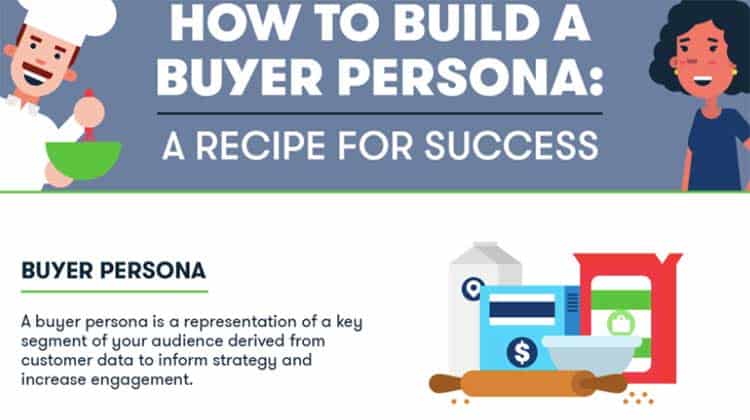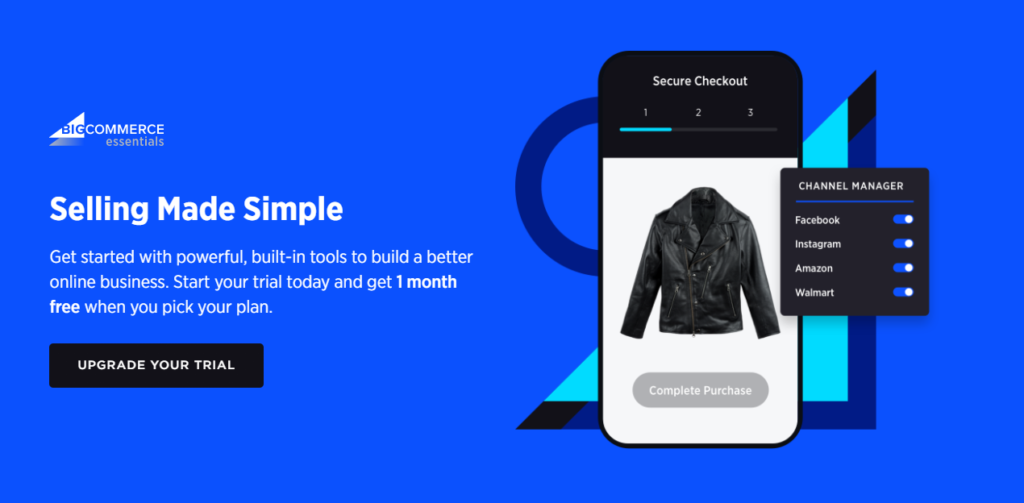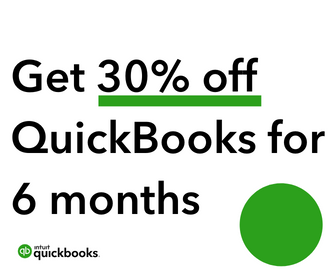Here’s a simple step by step guide on how to start your own online retail business today. It’s easier than you think!
Keyword research is the process of finding keywords that people are searching for on Google, Bing and other search engines. This helps with keyword optimization so that search
Based on research from Covid-19, the company that has helped accelerate ecommerce by 5 years. Legacy brands with physical stores like Lord & Taylor and Century 21 are filing for bankruptcy in 2019 as they realize the time to move their business online was yesterday! Ecommerce had a 14% share of global retail sales last year; Statista projects it will be 22% or $475 billion worth of B2C transactions just 7 short years later.
A recent study found that more than 50 million US adults have abandoned shopping at malls because there is little return on investment when prices often match those offered by Amazon and other online retailers instead of brick-and-mortar outlets such as Macy’s or JCPenney
In this beginner’s guide I’ll cover the basics for setting up and launching a thriving (and Covid-proof) ecommerce business from scratch using Bigcommerce.
- Research products to sell online.
- Choosing your business model.
- Validating your product idea.
- Registering and incorporating your company according to the law.
- Get a reliable source for your products.
- Creating a good business plan.
- Choosing your ecommerce platform and launching your store using Bigcommerce.
- Driving traffic to your ecommerce business.
- Generating sales and measuring results.
Imagine the possibilities. The opportunities are limitless, and you can be in charge of your own future if you start now. What do I need to know before starting my online business? You’ll learn everything from finding a niche that’s profitable for an ecommerce store owner, establishing pricing strategies with different customer segments in mind; cultivating social media marketing plans – all while staying up-to-date on industry trends so as not to fall behind or get left out of any important developments
How to Start an Ecommerce Business
1. RESEARCH A PRODUCT TO SELL
To be successful, you need to sell one of two types of merchandised products
- A high-demand product in a growing niche.
- A high-quality commoditized product.
Finding a good niche product
Niche products are unique, high-quality items that often have very lucrative profit margins. Niche products can be one of a kind or small batch and may include handcrafted goods like leather bags and pottery as well as seasonal preserves or crocheted garments.
Customized products
Commoditized products are those with high-demand or essential digital and physical goods that consumers keep coming back to. In short, they’re things that everyone needs – a category of commodities nearly every household will purchase at some point in their lives. Across the world, commoditized products make up the majority of B2C ecommerce sales with an estimated 50% share from 2018 alone! These types of items compete for customers on price so it’s not uncommon for prices to fluctuate by day as retailers try to stay ahead of industry rivals across the internet landscape.
It’s interesting to see how our lives have changed with the advent of global capitalism, where we can buy almost anything from a foreign country. A good example are chargers, which started as an innovative product that many companies tried to imitate and ended up commoditized because everyone had one on their shelf; now they’re just another commodity available in stores everywhere for dirt cheap.
How to choose a product
You never know, but you could be the next Elon Musk. If not then don’t worry! You can still start a successful ecommerce business without having to come up with a new idea or product that is completely different from everything else out there already.
Instead of worrying about innovation and coming up with something totally unique, think about what customers needs and consider what you have access to offer them for purchase online- this will allow your business opportunity more success among people who are looking for products like yours.
How to come up with product niche ideas:
- In today’s competitive marketplace, the cutting edge of innovation is often found in personal solutions. Can you create marketable products or services to solve problems that are specific to your family?
- Don’t leave your future up to chance. One of the most important decisions you’ll make when starting a business is what that business will be about, which means it’s worth thinking long and hard before taking this step for good reason. Start by asking yourself if there’s any area in life where you get excited or passionate easily? If so, then chances are there could be something out there waiting for you to find too!
- Branding is a longstanding marketing technique that needs to be considered when formulating your ecommerce business plan. The initial step in this process should answer these questions: what will the brand name of my product and company entail? Who are the target demographics for this branding campaign, and how can I connect with them on an emotional level through social media or other forms of advertising?
- Guilty pleasures are markrtable: People spend their money on things that they love. If you can tap into the consumers’ passions with your product, there’s almost certainly going to be a customer base built around it!
- You’ll never know what you can do until you look. Keep your eyes open for opportunity, and be on the lookout for societal shifts that may indicate a need or want in consumers’ lives. It’s not just about filling gaps; it could allow you to help create them as well!
- Is your phone getting old? Are you ready for a new laptop, or maybe that sparkling fun necklace to be the talk of this season? If so, then it’s time take advantage and get on the trend train early. Brands who are considered more “authentic” have an easier time making their mark in emerging markets which can set them up for success with larger market shares

2. CHOOSE YOUR BUSINESS MODEL
If you are an entrepreneur with a product and dream to sell it, there is one important question on your mind: “Where should I start?” You may be wondering whether the best option for you will be selling wholesale or retail. If so, this article can help. There are four types of businesses in ecommerce that each have their own unique benefits; let’s take a closer look at what they entail!
Business to customers(B2C)
B2C ecommerce is the traditional retail form. Individual customers make purchases of products or services at regular prices and are usually not companies themselves. Some B2C businesses sell physical goods, while others offer computer software, smartphone apps, etc., all with varying amounts of recurring subscriptions for different industries such as beauty treatments (e.g., haircuts) or advertising campaigns that require a monthly commitment to use their service in order to produce results over time – some more successful than others depending on your needs/wants.
Simply put: B2B involves “executive boards” making strategic decisions about large-scale corporate investments whereas individual consumers buy items from small business owners who cater specifically toward them by offering lower costs but higher volume transactions
Business to business(B2B)
B2B ecommerce businesses sell products/services to other business, but occasionally the buyer is also an end-user. Generally speaking, B2B transactions have longer sales cycles and high stakes which can take months to be finallized because they require board of members approval that often requires a lot of patience on behalf of the seller in order to close complex deals with big returns – this means being diplomatic and willing work for it!
Customer to customer(C2C)
Technology has made it easier for us to connect with one another, but how are we connecting? If you’re not a tech genius or an artist, chances are that you’ll have the most luck using tools like Craigslist and eBay. These C2C (consumer-to-consumer) businesses make up only about 1% of all B2B companies in America because they charge subscription fees when people sell products from other consumers within their network – which is different than your traditional “buyer seller” setup where there’s typically someone managing inventory on behalf of everyone else involved.
Dropshipping
Be your own boss and start a new business. Dropshipping is the perfect way to get started in ecommerce without having expensive inventory or shipping costs!
Dropship? Who knows about that thing, right?! Well this article will explain what it’s all about so you can make an informed decision if dropshipping has potential for success as part of your next big entrepreneurial venture. Let me break down how it works: first off, like any other type of retailer (except with more freedom!), you’ll list products on a website where customers are able to buy them directly from YOU – the seller- rather than through another company who actually produces these items; then when someone purchases something from YOUR site they give their credit card information
Fulfillment by Amazon
Companies that choose this business model Fulfilment by Amazon (FBA) can enjoy the benefits of an easy, hassle-free way to get their items up on one of the world’s most well known eCommerce websites. The company relieves you from having a warehouse and allows your customers to purchase with just two clicks – no more browsing through hundreds or thousands upon products at brick-and-mortar stores! Plus, if anything goes wrong during shipping process for any reason whatsoever–from lost packages due to said customer not being home when they were supposed to be there all day long waiting in anticipation as is often done thanks so much technology these days like I personally am guilty of doing once too many times than should legally be allowed!–the burden rests
3. VALIDATE YOUR PRODUCT IDEA
At this stage, it’s important to perform market research and create customer profile which will help you create laser-focused marketing strategies later on. Market research doesn’t have to be complicated or difficult – in fact, creating a persona can be fun! Let’s take some time now so that we don’t waste any energy when the product launches.
At this point of developing your idea for an innovative new startup project there are two major things you need: one is information about what people want; another is knowledge about how they think and behave as consumers (their “personality”). The first thing I recommend doing before moving forward with anything else is performing thorough market analysis by conducting interviews with potential end users/buyers so that their needs align nicely
Steps to validate a product idea
Market research
Market research is a lucrative business. It can seem overwhelming, but not if you have the right tools and strategy in place to gather information about your consumer base. There are three effective ways to find out more:
- Conduct consumer survey
- Interview consumers
- Create focus groups
Surveys which help put together reports that summarize data from different angles for analysis -Interviews with consumers who provide detailed feedback on their opinions or behaviours towards brands after they try them -Focus groups where people get together and discuss what they think of products before being asked specific questions
4. CREATE YOUR BUSINESS STRUCTURE AND REGISTER THE COMPANY.
To get started, legally you need to pick up a business structure and register your company. If you’re freelancing under your own name, sign up as a sole proprietor; otherwise, most likely an LLC or S Corporation will be right for registering ecommerce companies.
There are two basic kinds of companies:
Sole proprietorship
Self-employed people usually face two options for business structures: register as an LLC or operate without any structure at all. The good thing about operating under a simple sole proprietorship is that it’s very straightforward and requires no registration in most states, which makes the process easier to navigate than registering your entity with the state. Furthermore, there are five states (Oregon, Alaska Montana Delaware and New Hampshire) where you don’t have to pay sales taxes at every transaction because they’re not charged statewide; instead this tax will be paid on quarterly basis for businesses who sell items within these particular areas of those 5 aforementioned states only
The setup might be quite simple, but there are a couple of major challenges to sole trader position. Firstly, if your company is in trouble and you’re not protected by personal assets as is the case with other business structures such as S-corporations or LLCs–you could end up in dire straits. Secondly, self-employment tax rates increase for higher earners under this structure which can put an even bigger dent on earnings that don’t seem so great already because it’s considered “unincorporated”. However, one way out of both issues? Pick a different type of business formation altogether!
Limited liability company
In order to protect your personal assets from any potential legal liabilities, you should register an LLC. To get started, appoint a registered agent who will represent the company and file articles of organization with your state’s office for doing business in this area. Once done, pay only around $500 total as long as you’re ready to go
LLC’s are a great option when you want to manage your own company. They give you the opportunity to be in charge of your business, while also letting someone else handle all the administrative work for an affordable cost. When it comes time to hire employees there is only one step left: get yourself an EID from IRS and then take care of any other hiring needs as needed
Get a business license.
You can’t just start a business without getting the proper licenses. If you plan to do anything other than operate as a sole proprietor, then you will need some type of license for your company from either your state or federal government. For example, if you are running dropshipping out of home and decided on an assumed name instead of using “John Smith” because he’s scared people might find his address online with Google Maps but don’t want him have to pay all that money at UPS every time there is something wrong when they deliver it so John decides on Ann Jones who lives in California — well now he needs two more types: A DBA (doing-business-as) Company License and Sales Tax Permit which varies depending what state
Branding your business
Visual branding can be a complex topic, but it doesn’t have to seem that way! In this article I’ll cover the basics of what you need in order to make your company known and create brand awareness. To do so, companies typically use logos with complementary colors across all sales channels. You might want to design one yourself or get some help from a professional designer for maximum effect (rental rates are surprisingly affordable!).
If you feel like brand building is too much work for you Neushub Digital Media, a company that I founded can gladly help you on this matter we offer different brand building packages suited for your business needs. All you need to di is visit our page at Brand building to find the best package
5. SOURCE AND MANUFACTURE PRODUCTS FOR YOUR STORE
There are three main ways to get products for your store: DIY production, wholesaler, manufacturer and dropshipping. Many online retailers combine all these methods to achieve a balanced income stream. For example, you might produce some of the items yourself but order other goods from wholesale suppliers in bulk; alternatively you could get materials drop-shipped straight to customers while taking care of all customer service questions yourself on site (the “DIY” option). Each method has its pros and cons – do what works best with your skill set!
How many times have you wanted to start a business but were waiting for the perfect opportunity? The good news is that with DIY, there are no bosses spying on your work or deadlines. You can sell anything from jewelry and clothes to furniture quickly through social media channels like Etsy.
If you choose the DIY route, remember to:
Arrange a dependable supply chain for source materials.
- Determine mailing options in advance; will you hire a shipper or send items yourself?
- Figure out your production timeline.
- Think about where you’ll store your inventory.
In this article, we’ll be looking at two ways to find a product source – wholesalers and manufacturers. Let’s start with the first of our options: wholesale organizations!
A wholesaler is a company that deals in the purchasing and reselling of bulk goods. This can include anything from brand name items to generic merchandise depending on your business needs. If you’re not interested in product development, when it comes to marketing or scaling your business, then this might be an option for you because they offer products at wholesale prices which means more money left over without any risk
Factors to check from a wholesaler:
- Read company references. If the manufacturer is based in the U.S. or Canada, check its Better Business Bureau rating and any associated reviews.
- Get a production cost figures.
- Ask about minimum order quantities.
- Get a manufacturing time estimate.
- Go over bulk freight options.
- Examine contracts carefully.
- Ask about guarantees and after-sales support.
Dropshipping is one of the best way to get started in the retail world without having any overhead. When you partner with dropshipper, they take care of your manufacturing and shipping while all you do is list their products on your site for people to buy.
It’s quick and easy, it has a lower profit margin than other models of reselling but with dropshpping you can also do DIY sales such as an artist who sells one-of-a kind paintings from home may also sell reproductions or branded mugs via a dropshipper.
6. CREATE YOUR BUSINESS PLAN
If you’re a risk-taker, take some time to think of the future of your business before jumping in at the deep end. Around 50% of new businesses fail within five years because they don’t plan ahead and commit as much money into advertising or marketing their product/service early on so that it can be successful in its first year.
Writing a business plan can give you a better understanding of your unique product and help you:
- Find the resources that you need to run your business.
- Figure out what your competitors are up to.
- Spot opportunities in the marketplace.
- Identify your target market.
- Visualize your company’s future.
7. BUILD YOUR ECOMMERCE STORE
You know, you’ve put in a lot of work to get your business off the ground. You have validated your product ideas and registered yourself as an official company with all that paperwork so it’s finally time for what really matters: building! All online retailers choose SaaS platforms because they offer easy-to-use website builders and ecommerce platforms – no need to start from scratch when there are already tools available out there just waiting for you.
The best way to find a good SaaS provider is the trial before committing. If nothing else, you will know what’s out there and be able to compare providers based on their features — not just price or reviews!
If it sounds like something that would make sense in your blog post then try signing up for one today and see how it goes
Look for the following features when deciding on the ecommerce platform you want to use:
- Domain name hosting.
- Excellent speed and uptime.
- A great in-product website builder.
- Free, user-friendly themes.
- Responsive website design.
- An extensive app store full of usable plugins.
- Full PCI compliance.
- Built-in SEO tools and fully customizable links.
- Promotions, discounts, analytics, and other ecommerce marketing features.
- Customer support via phone, email, and live chat.
- An unlimited product catalog.
- Zero transaction fees and low credit card processing fees.
Disclosure: I may receive affiliate compensation for some of the links below at no cost to you if you decide to purchase a paid plan. You can read our affiliate disclosure in our privacy policy.
BIGCOMMERCE REVIEW

BigCommerce is a leading e-commerce software platform that provides startups and established companies with everything they need to start and grow their online store. BigCommerce has an easy-to use interface, as well as advanced built in features for all of your marketing needs. If you are looking for the perfect system, then consider using this robust platform.
BigCommerce is a professional, ‘hosted’ e-commerce solution that allows business owners to set up an online store and sell their products on the web. The software runs in its own servers so you don’t have to purchase hosting or install anything on your computer. All you need access to is a browser and internet connection anywhere around the world for building and managing your store without any hassles whatsoever. It’s one of those well known SaaS solutions which means that unlike owning it outright, all users are charged with monthly fees instead
BigCommerce hosts businesses at no cost as long as they buy into this type of model where clients pay continuously every month rather than paying upfront like traditional models do
The BigCommerce platform provides a range of customizable templates to help you design your online store for selling either physical or digital goods. It also includes tools that are aimed at helping with market research and marketing. It is mainly designed to be used by people who have little knowledge in web-designing, but it can also expand into more technical aspects like tweaking HTML and CSS code on the site’s webpage if desired.
The best way to get the most out of an e-commerce experience is with a well rounded software solution. BigCommerce has been around for just about 10 years, but in that time they have helped thousands of businesses grow and expand their customer base on top of providing them with secure transactions. If you are interested in using this platform then please read our review below so we can help you make your decision!
E-commerce solutions come in all shapes and sizes when it comes to features, price points, marketing tools etc., which makes navigating through everything quite overwhelming at times – especially if one doesn’t know what they want or need from an e-solution (I don’t). However now there’s BigCommerce who not only offers
Here’s a quick overview of what BigCommerce offers:
1. Customizable pre-built site templates
2. Built-in SEO
3. Marketing and conversion tools
4. Tools to manage shipping and payments
5. 99.99% uptime
6. Annual conference on e-commerce
7. A single dashboard to manage product listing on your site, as well as Amazon, Facebook, Instagram, Ebay, and other channels
8. Estimated 28% year-over-year growth: this is the average growth rate of BigCommerce users according to research they conducted through Ipsos.
9. POS (point-of-sale) solutions
10. B2B e-commerce solutions
PAYMENT PROCESSING
With BigCommerce as your online store’s checkout app, customers will have the freedom of choice when it comes to payment options. This e-commerce software integrates with up to 38 payment gateways so that you don’t need a merchant account or gateway for every type of purchase.
With these features and more, an amazing customer experience is just one click away
SECURITY AND COMPLIANCE
BigCommerce is PCI DSS compliant, meaning your customers can pay with credit cards and you don’t have to worry about any of the security concerns.
What’s more? BigCommerce has powerful encryption that will keep all of your data safe from prying eyes while it’s being transmitted online
TEMPLATE AND DESIGN
BigCommerce offers over 150 free and paid responsive themes available for the design of your online store. There are 12 free BigCommerce templates, each containing a number of different variants so there truly is something to choose from.
- DRIVE TRAFFIC TO YOUR STORE
Launching an ecommerce site is easy, but it can be hard to attract customers. Fortunately there are a variety of digital marketing tactics that you can employ in order to do so! We’ll cover paid and free methods you should consider for your business as well as how they will affect sales.
Organic marketing channels are a great way to build long-lasting relationships with customers. Organic methods of advertising focus on the customer as opposed to blasting them with ads and forcing products down their throats, so it can take time for these strategies to work effectively but they create lasting return on investment (ROI). Here are some organic tactics worth looking into:
Search engine optimization (SEO): including relevant keywords in page content results in higher rankings from search engines like Google.
Content Marketing: This includes starting a blog or writing articles that target your audience’s needs which will then drive targeted traffic back towards your site through social media pages such as Facebook and Instagram where you’re able to interact directly with potential consumers by providing valuable information without being too pushy
Paid channels may provide quick online marketing wins, but they typically have a lower ROI. Free tactics can offer more bang for your buck (excluding affiliate marketing).
Social media influencers on Instagram, Facebook, TikTok and other platforms are increasingly turning to ecommerce brands for a new way to make money online. For bloggers or anyone with their own website who is interested in making some extra cash from the comfort of home all they need do is sign up as an affiliate through companies like my company’s program. They’ll be paid commission each time someone clicks through one of our links and makes a purchase at any retailer including Amazon (where we get more than half our sales). The best part about this industry isn’t just that it has such low barriers-to entry but also because social media stars have been dominating it lately.
The world of advertising has changed dramatically in recent years. The most successful advertisers are those that take advantage of the latest technological advancements to tailor their messages and target audiences more effectively than ever before. One excellent way for companies to do so is through a new breed of ads: pay-per-click (PPC) advertisements, which can be targeted with as much specificity as desired by using Google’s PPC platform or even Facebook DPA Ads; these types of ad campaigns allow you to get your message out there without breaking the bank on traditional media like print, TV, radio etc., since they’re relatively inexpensive when compared against other forms such because direct mailings or magazines space buys all it takes now is some creativity – think about what would.





